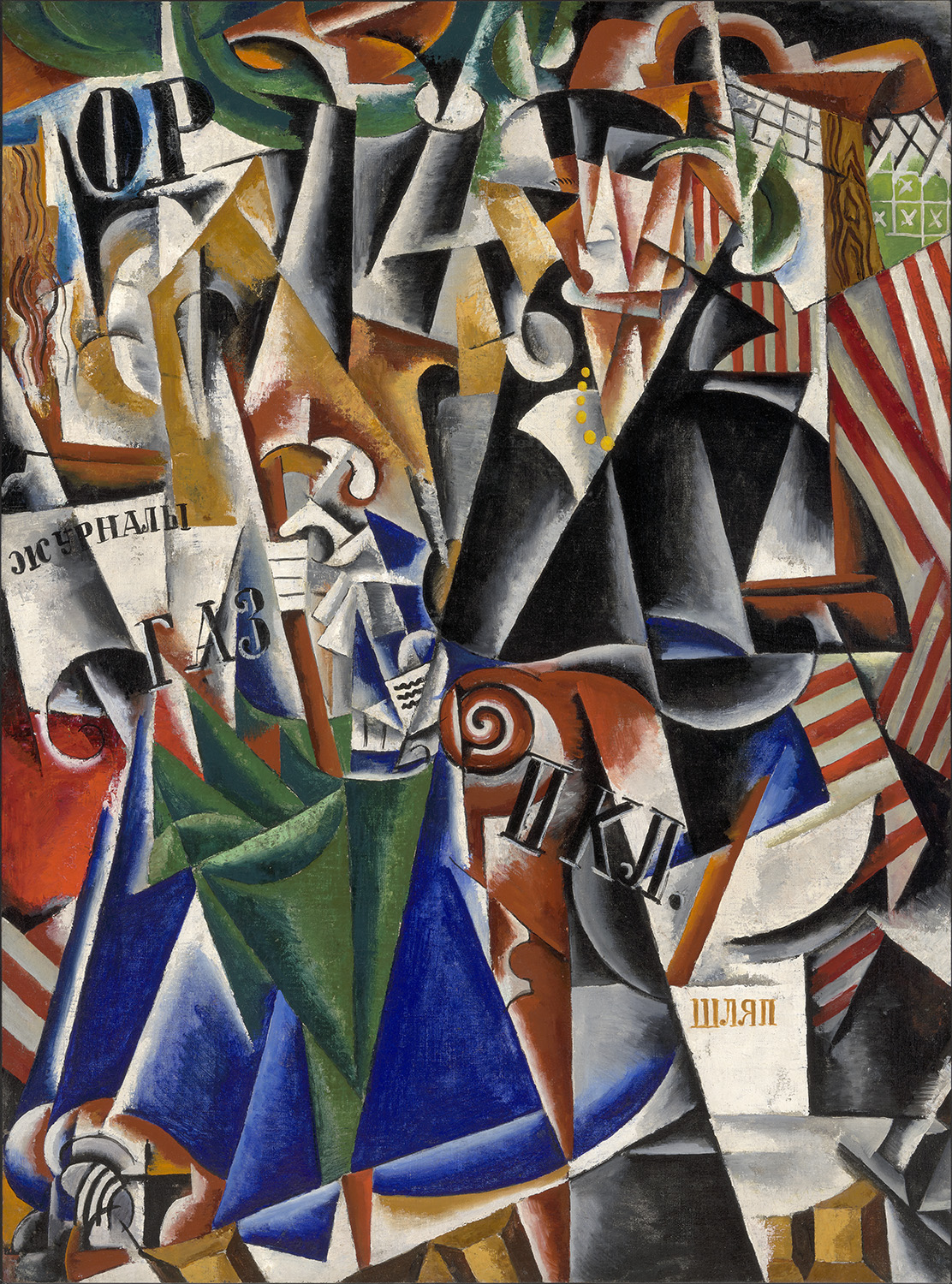The Traveler
1915
Liubov Popova (Russian, 1889–1924)
Oil on canvas
Norton Simon Art Foundation
As a young woman from a prosperous Russian family, Liubov Popova traveled throughout Europe to develop her talents as a painter. She worked constantly, studied the Old Masters, and enrolled in the Parisian Académie de la Palette, where her teachers included Jean Metzinger, an early practitioner of Cubism. This abstracted composition suggests the speed and sense of dislocation associated with modern transport, and seems to include an oblique self-portrait in the central figure: a woman wearing a yellow necklace and high-collared cape who reads a magazine or newspaper in her seat on a train, grasping a green umbrella in one gloved hand. Snatches of words (including the Russian terms for “gazette,” “hat,” “2nd class,” and the roar of the train) vividly convey the sights and sounds of locomotive travel. With her use of found text, fragmented forms, and shapes rhythmically repeated to create a sense of acceleration, Popova assimilated both French Cubism and Italian Futurism in a uniquely Russian hybrid known as Cubo-Futurism.
Encounters with the Collection: Popova’s The Traveler
How might a static visual medium like painting conjure the multisensory environment of train travel? Chief Curator Emily Talbot discusses Liubov Popova’s use of cubism for this purpose by showing how the artist incorporated fragmented references to sounds and words to evoke the frenetic experience of the railway. As Talbot explains in the video, part of a series from 2020 celebrating the lives and careers of women artists, the depiction of movement clearly fascinated Popova, who painted not one but two versions of The Traveler over the course of her short life.
